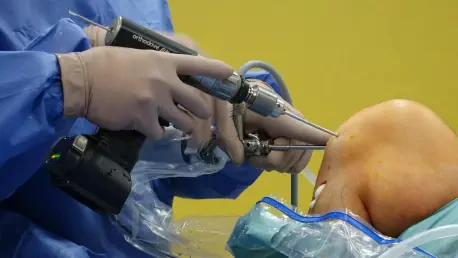Rising statistics indicate that over 700,000 knee replacement procedures occur annually in the United States alone, with many patients experiencing enhanced outcomes thanks to innovative robotic technologies. Robotics in knee replacement surgeries represent a fascinating trend, reshaping the landscape of orthopedic procedures by enhancing precision and improving patient recovery. This growing impact calls for a deeper exploration of the latest trends, valuable expert insights, and the potential future trajectory of these life-changing technologies.
Current Trends in Knee Replacement Robotics
Growth and Adoption Statistics
Robotic knee replacement technologies have swiftly gained traction, noted for their precision and reduced recovery times compared to conventional methods. Recent data from industry reports show an annual growth rate of 15% in adoption across the healthcare sector. This surge in adoption is not restricted to high-end hospitals; clinics and healthcare providers worldwide recognize robotics’ transformative impact. The increase in robotic knee surgeries aligns with technological advancements, augmented software capabilities, and enhanced surgeon training programs.
Real-World Applications
Real-world applications of robotic knee surgery reveal its game-changing potential in practice. Successful cases abound, from patients experiencing decreased postoperative pain to those enjoying faster recoveries. Companies like Stryker and Johnson & Johnson are pioneers in this field, contributing innovations that marry robotics with surgical expertise. Product lines such as Stryker’s Mako system highlight these technologies’ proactive role in setting a new benchmark for orthopedic procedures. Real-world success stories reinforce the substantial benefits awaiting broader adoption of robotic-assisted knee replacement.
Insights from Industry Experts
Discussions with industry experts shed light on the complex interplay of technology, skill, and patient care. Orthopedic surgeons emphasize how robotics offer greater precision, fostering better alignment and implant positioning. Meanwhile, medical device engineers highlight ongoing challenges, including the high costs of robotic systems and the steep learning curve for new adopters. Despite these hurdles, healthcare analysts anticipate that robotics will continue shaping knee replacement surgeries, reaffirming the profession’s commitment to improving patient outcomes over time.
Future Prospects and Implications
As we look ahead, the future prospects for knee replacement robotics are both promising and daunting. Anticipated advances such as augmented reality interfaces and machine learning integration will likely elevate current capabilities, delivering even more precise surgical interventions. However, these innovations bring their own set of challenges. The financial cost remains significant, and regulatory hurdles could impede rapid widespread adoption. Future advancements will require a holistic approach, balancing cutting-edge technology with ethical healthcare delivery to ensure accessibility for broader patient populations.
Conclusion
Understanding the trends surrounding knee replacement robotics is critical for stakeholders aiming to align with future medical advancements. While past challenges, such as tariffs in medical exports and competition among top companies like Zimmer Biomet and Stryker, have influenced market dynamics, the trend toward robotic technologies carries new potential. For healthcare providers, researchers, and policymakers, this presents a call to action, emphasizing the need to embrace innovation strategically. Looking forward, these technologies are poised to revolutionize healthcare delivery, promising improved patient outcomes and reshaping the orthopedic landscape.









